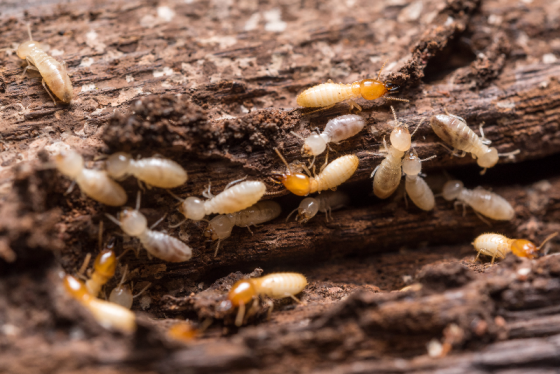Hair loss is a concern that affects millions of people worldwide, transcending gender, age, and ethnicity. While various factors contribute to hair loss, genetics plays a significant role, especially in the case of conditions like alopecia. Understanding how your genes influence your hair’s health can help you take proactive steps in managing and potentially preventing hair loss. In this article, we’ll dive into the genetic factors that contribute to alopecia, explore the science behind it, and offer practical tips on managing the condition.
What is Alopecia?
Alopecia is a medical term used to describe hair loss, and it can manifest in several forms. While there are various types of alopecia, including alopecia areata, androgenetic alopecia, and cicatricial alopecia, the most common type is androgenetic alopecia (AGA), also known as male-pattern baldness or female-pattern baldness. This type of hair loss is primarily driven by genetic factors.
Types of Alopecia
-
Alopecia Areata – This autoimmune condition causes hair to fall out in small patches. It is believed to be related to genetic factors that cause the immune system to mistakenly attack hair follicles.
-
Androgenetic Alopecia – This is the most common type of hair loss, linked to both genetics and hormones. It affects both men and women and results in gradual thinning or complete loss of hair.
-
Cicatricial Alopecia – This rare form of alopecia involves the destruction of hair follicles due to scarring, often caused by inflammatory skin diseases or infections.
While all these types can result in significant hair loss, androgenetic alopecia is the most researched in terms of genetics and how it affects hair growth.
The Genetics Behind Hair Loss
How Genetics Contribute to Hair Loss
Genetics plays a critical role in androgenetic alopecia, and understanding this can shed light on why some individuals are more predisposed to hair loss than others. Studies suggest that hair loss is inherited through both maternal and paternal family lines, though the X chromosome is considered particularly significant.
The Role of the X Chromosome
The X chromosome, inherited from the mother, carries a gene called AR (androgen receptor), which plays a vital role in how the body responds to androgens—hormones like testosterone. High levels of androgens can shrink hair follicles and shorten the growth phase of hair, leading to hair thinning and eventual baldness.
A key study revealed that men with androgenetic alopecia tend to have a variant of the AR gene that makes them more sensitive to androgens, contributing to hair loss. Women, although they also inherit the AR gene from their mothers, are less likely to experience severe hair loss because they have two X chromosomes, which offer a buffer against the genetic predisposition.
Polygenic Inheritance of Alopecia
Research has also shown that hair loss does not result from a single gene but rather a combination of multiple genes. This means that a person’s susceptibility to hair loss depends on various genetic factors working together. For example, researchers have identified genes that influence hair follicle growth cycles, hair color, and even how hair reacts to hormonal changes. If both parents carry these genetic markers, the likelihood of a child developing alopecia increases.
Hormonal Influences and Genetic Interactions
While genetics set the stage for hair loss, hormones play a critical role in the progression of alopecia. Androgens, which include testosterone and dihydrotestosterone (DHT), are hormones responsible for regulating hair follicle development. In individuals genetically predisposed to hair loss, higher levels of DHT cause hair follicles to shrink, resulting in thinning hair. This is particularly prominent in androgenetic alopecia, where the gene variation leads to an over-sensitivity to DHT.
In men, androgenetic alopecia typically begins as a receding hairline or a thinning crown, and it can progress to complete baldness. In women, the condition often manifests as diffuse thinning across the scalp, which can be less noticeable but still emotionally distressing.
Factors That Influence Genetic Hair Loss
While genetics is the primary factor in hair loss, environmental and lifestyle factors also influence how and when alopecia develops. These include:
1. Age and Hormonal Changes
As people age, their hormone levels fluctuate. In women, menopause leads to a drop in estrogen levels, which can exacerbate hair thinning, especially in those with a genetic predisposition to alopecia. In men, levels of testosterone and DHT increase with age, potentially accelerating hair loss.
2. Stress
Chronic stress can contribute to hair loss, even in individuals who are genetically predisposed to maintain thick hair. Stress can trigger a condition called telogen effluvium, where a large number of hair follicles prematurely enter the shedding phase, causing excessive hair loss.
3. Diet and Nutrition
A poor diet can worsen hair loss in genetically susceptible individuals. Deficiencies in vitamins and minerals like iron, zinc, and biotin have been linked to hair thinning. A balanced diet rich in essential nutrients can help minimize hair loss and promote healthier hair growth.
4. Hair Care Practices
Excessive use of harsh chemicals, heat treatments, and tight hairstyles can damage hair and cause breakage. While this may not lead to permanent hair loss, it can exacerbate thinning, especially if the person is genetically prone to alopecia.
Early Signs of Genetic Hair Loss
Recognizing the early signs of genetic hair loss can help you take preventive measures to slow down the process. Some common signs of alopecia include:
1. Thinning Hair
Gradual thinning of the hair, especially along the hairline, crown, or temples, is one of the earliest signs of androgenetic alopecia.
2. Receding Hairline
A receding hairline is typically seen in men, while women may experience overall thinning across the scalp.
3. Excessive Shedding
An increase in the amount of hair that falls out during washing or brushing can indicate that hair follicles are no longer in the active growth phase.
4. Changes in Hair Texture
Hair may begin to lose its volume, becoming finer or thinner in texture.
How to Manage Genetic Hair Loss
Although genetic hair loss cannot be entirely prevented, there are steps you can take to manage and slow down its progression.
1. Medications
-
Minoxidil – This over-the-counter topical solution is commonly used to treat androgenetic alopecia. It helps stimulate hair growth and slow hair loss in both men and women.
-
Finasteride – This prescription medication is used to block the conversion of testosterone to DHT, thereby preventing hair follicle shrinkage and promoting hair regrowth. It is most effective in men.
2. Hair Transplant Surgery
For those with advanced hair loss, hair transplant surgery can offer a permanent solution. This involves taking hair follicles from one part of the scalp and transplanting them to areas affected by thinning or balding.
3. Lifestyle Changes
Maintaining a healthy lifestyle, managing stress, and eating a balanced diet rich in vitamins and minerals can help support hair health. Regular exercise can also promote blood circulation to the scalp, potentially improving hair growth.
4. Alternative Therapies
Some people explore natural remedies and alternative treatments like essential oils, acupuncture, or herbal supplements. While these treatments may provide relief for some individuals, there is limited scientific evidence supporting their effectiveness for reversing genetic hair loss.
Conclusion
Genetics plays a pivotal role in the development of alopecia, especially in androgenetic alopecia, which is influenced by inherited genes and hormonal fluctuations. While you cannot control the genetic factors that predispose you to hair loss, understanding them can empower you to make informed decisions about your treatment options. From medications to lifestyle changes, there are various ways to manage hair loss and slow its progression. If you suspect that genetics may be contributing to your hair thinning or loss, consulting a dermatologist or a hair specialist can help you develop a tailored plan to address your concerns and restore your confidence.
By staying informed and proactive, you can navigate the complexities of alopecia and maintain the best possible scalp and hair health for the long term.





